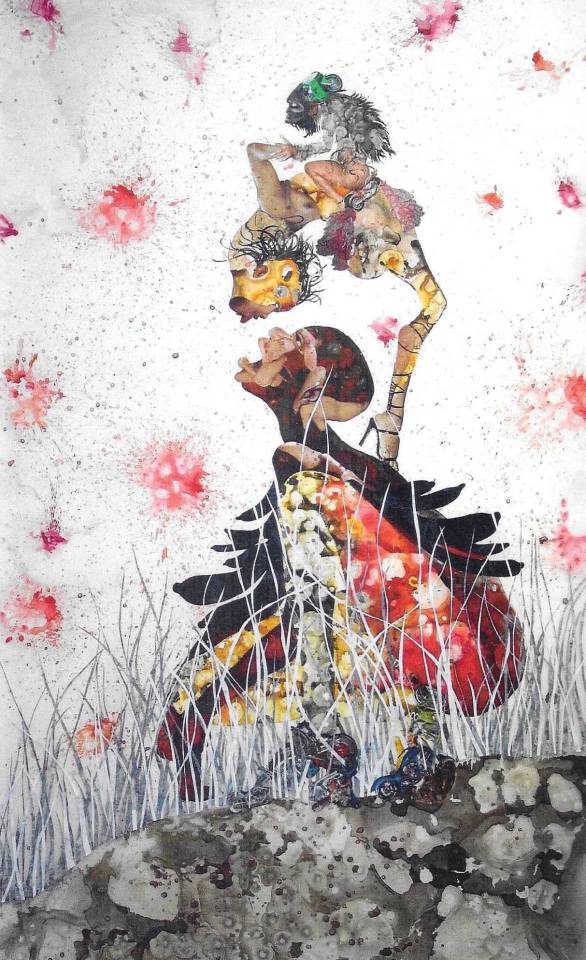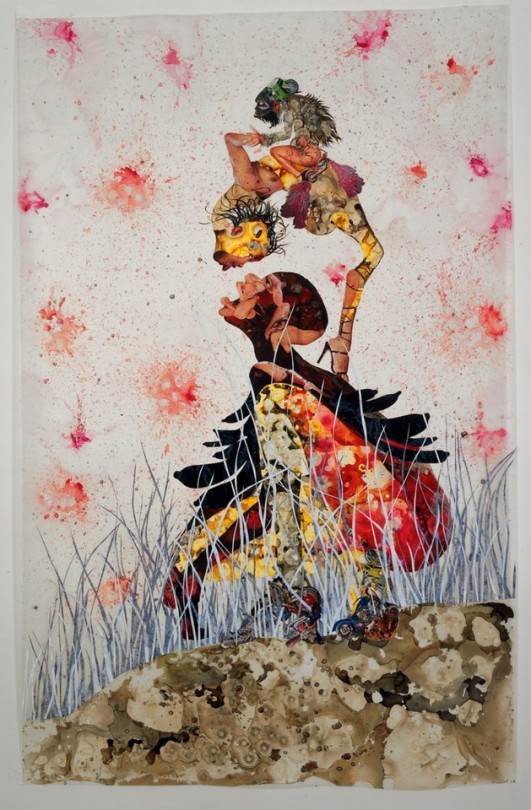#Misguided Little Unforgivable Hierarchies
Text
Any muscle uncomfortably tensed for too long will still ache even
after it is at last relaxed. The sob that escapes my chest is a moth
that has been slamming itself against the glass for 30 years trying
to find a way out—not a hurt moth but a relief moth.
— Rachel Wiley, from "Misguided Little Unforgivable Hierarchies," Revenge Body
#quote#Rachel Wiley#poetry#Revenge Body#out of my collection#Misguided Little Unforgivable Hierarchies
723 notes
·
View notes
Text

'misguided little unforgivable hierarchies,' 2005 in wangechi mutu - adrienne edwards, courtney j. martin, kellie jones + chike okeke-agulu (2022)
50 notes
·
View notes
Photo

Misguided Little Unforgivable Hierarchies, by Wangechi Mutu, 2005.
Kenyan contemporary artist, born in 1972.
#women and arts#women in the arts#women artists#female artists#kenyan artist#kenya#nairobi#brooklyn#wangechi mutu#misguided little unforgivable hierarchies#2005#painting#painter#mixed media#collage#artist#contemporary#afrofuturism#21st century
4 notes
·
View notes
Text
creative auto bibliography
(tré way)
Wangechi Mutu (homeward bound) +
(Misguided Little Unforgivable Hierarchies) + (Cancer of the Uterus)
In her collages, films, sculptures and installations Wangechi Mutu reflects on sexuality, femininity, ecology, politics, the rhythms and chaos of the world and our damaging efforts to control it. First recognised for paintings and collages, she is concerned with the multiple forms of violence and misrepresentation visited upon women, especially black women, in the contemporary world. Their skin usually an eruption of buboes, mutant, pieces pulled from gun shafts or machine gears sprouting from the sockets of joints, their bodies half human, half hyena, these entities offer a glimpse at the distortions of the body and the mind, often brought by forces active in the oppression of women. More recently, exploring and destabilizing cultural preconceptions of the female body and the feminine, in her works Mutu proposes worlds within worlds, populated by powerful hybridised female figures. Her practice has been described as “engaging in her own unique form of myth-making, one in which the interweaving of fact with fiction opens up possibilities for another group of symbolic female characterisations, markedly different from those that appear in either classical history or popular culture.”
(https://www.victoria-miro.com/artists/9-wangechi-mutu/)
Her practice combines a variety of source material and textures to explore consumerism and excess: for a 2005 work titled Cancer of the Uterus, Mutu employed a medical pathology diagram, facial features cut from a magazine, fur, and a heavy application of black glitter to create an eerily distorted face. The almost science fiction-like nature of her imagery has placed her work within the realm of Afrofuturism, and her practice is often discussed as providing an alternate course of history for people of African descent. (http://www.artnet.com/artists/wangechi-mutu/)
(House/Full of Blackwomen)
Choreographer Amara Tabor-Smith and theater director Ellen Sebastian Chang are in collaboration with sex-trafficking abolitionists and survivors, dancers, nurses, architects, musicians, somatic PhD scholars, video artists, chefs, teachers, and anti-trafficking organizations in “House/Full of Blackwomen). These individuals gathered to create public performances that represent the private rituals of healing and well-being for black women and girls. Developed through intimate dialogues between collaborators shared in a communal safe space, the performed rituals address issues of displacement, erasure, well-being and sex-trafficking of black women and girls in Oakland, California, ignited by the core question, “How can we as black women and girls find space to rest, breathe, and be well within a stable home?” For me this also raises the questions behind rage that we carry that does not only belong to us, deaths we have died that were not ours, how our healing involves healing the ancestral pain that lives within our lineage. (http://www.abladeofgrass.org/fellows/housefull-of-blackwomen/)
(http://www.deepwatersdance.com/portfolio/housefullofblackwomen-2/)
“the skeleton architecture, or the future of our worlds”
Curated by Eva Yaa Asantewaa, the dance piece incorporated “structured improvisation, a deep sense of play, a bold engagement with the audience, and a particular permission given to watch and witness.”
(https://hyperallergic.com/334680/20-dancers-build-shape-and-share-a-world-for-themselves/)
Also inspired by Audre Lorde’s essay, “Poetry Is Not a Luxury,” writer Eva Yaa Asantewaa presents an evening highlighting the power of Black women within community. This evening imagines and activates Danspace Project as a site of InterSections – like crossroads, places of high-stakes risk, as well as magic. Over two hours, 20 Black women and gender nonconforming dancers from different generations and dance genres channel and manifest InterSections, crossroads sites within Danspace’s sanctuary, responding, in improvisation, to the following prompts: the walk, the sermon, the flood, the haunt, and the planting.
(http://www.danspaceproject.org/calendar/the-skeleton-architecture-or-the-future-of-our-worlds/)
All of my artists and their works involves the gathering of black women (symbolically and literally) alongside the very complex histories we hold in our multiplicity. We all share rage but we may release rage in different ways. We often may hold rage in different places in our bodies. Wangechi Mutu providing safe spaces in her workplace, she is indirectly and directly inviting black women to be inside of her works through reflections, to have a home and hold a deep and true sense of resonance. Amara and Ellen and Eva Yaa both are destabilizing what “ritual” may look like for our community, dismissing any negativity that is linked with witchery, voodoo, etc, and making space for black women to collaborate and actually build spaces for not only them to reside but those who cannot say their name. By conjuring up our ancestors, sisters, spirit guides, us expressing our rage is making our and their pain known to the public, a luxury many do not have.
0 notes